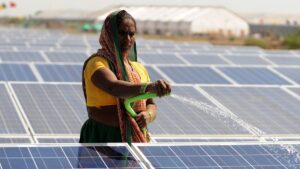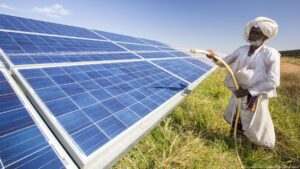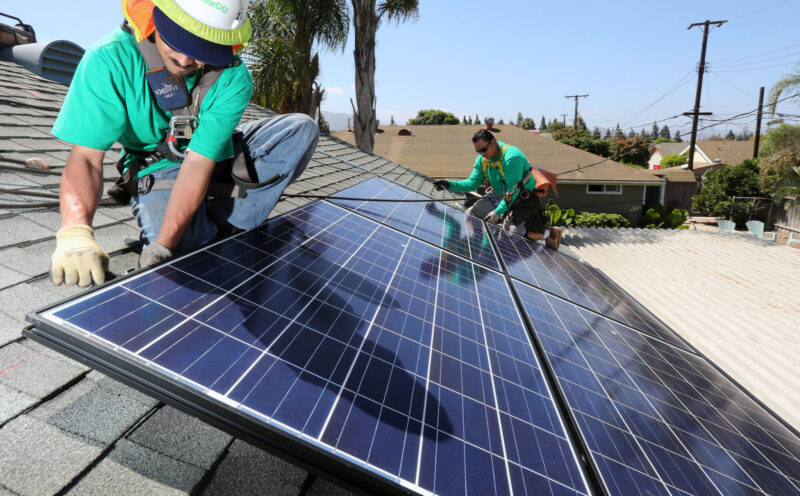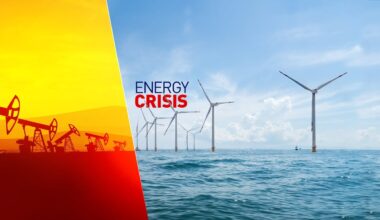Introduction: Pakistan Solar Energy Is Redefining the Global Playbook

Pakistan Solar Energy is no longer a fringe experiment—it is a people-powered juggernaut racing ahead of every prediction. In just a few years, Pakistan Solar Energy adoption has vaulted the nation from chronic power shortages to the front line of a grassroots clean-energy uprising. How did a lower-middle-income country battling currency devaluation, sky-high inflation, and lethal heatwaves install more than 15 GW of rooftop and village-level solar in a single year? Read on to discover why Pakistan Solar Energy is captivating analysts, worrying utilities, and providing an unexpected roadmap for other developing nations.
The Perfect Storm: Why Pakistan Solar Energy Took Off
Pakistan, home to more than 240 million people, is experiencing one of the most rapid solar revolutions on the planet, even as it grapples with poverty and economic instability.
The country has become a huge new market for solar as super-cheap Chinese solar panels flood in. It imported 17 gigawatts of solar panels in 2024, more than double the previous year, making it the world’s third-biggest importer, according to data from the climate think tank Ember. Pakistan’s story is unique, said Mustafa Amjad, program director at Renewables First, an energy think tank based in Islamabad. Solar has been adopted at mass scale in countries including Vietnam and South Africa, “but none have had the speed and scale that Pakistan has had,” he told CNN. There’s one particular aspect fascinating experts: The solar boom is a grassroots revolution and almost none of it is in the form of big solar farms. “There is no policy push that is driving this; this is essentially people-led and market driven,” Amjad said. Pakistan’s solar story is not a straightforward good news story; it’s complex and messy with potential trouble ahead as the energy landscape changes radically and rapidly. But many analysts say what’s happening here undermines an increasingly popular narrative that clean energy is unaffordable, unwanted and can only succeed with large-scale government subsidies. “Contrary to the notion that renewables only thrive on subsidies or are ‘forced’ onto the Global South, Pakistanis are actively choosing solar because it makes financial sense,” said Harjeet Singh, climate advocate and founding director of Satat Sampada Climate Foundation.
Ultra-Cheap Chinese Panels Flood the Market
-
In 2024, Pakistan imported 17 GW of photovoltaic modules—double the previous year—propelled by falling global prices and an open-tariff regime.
-
The average landed cost of panels plunged below US $0.15/W, making Pakistan Solar Energy systems affordable even for lower-income households.
Electricity Prices Soar 155 % in Three Years
Electricity costs have shot up 155% over the last three years, Amjad, from Renewables First, said. In addition, grid electricity is unreliable with multi-hour blackouts common in parts of the country. Businesses and households able to afford it have turned to cheap solar. While precise data on the amount of solar installed is sparse, analysts estimate around 15 gigawatts was installed last year compared to peak electricity demand in the country of about 30 gigawatts, said Dave Jones, Ember’s global insights program director. The scale is “just mind boggling,” he told CNN
-
Legacy dollar-denominated power-purchase agreements dating back to the 1990s lock utilities into paying generators whether or not electricity is used.
-
A depreciating rupee and surging LNG prices after Russia’s invasion of Ukraine drove tariffs skyward, making Pakistan Solar Energy look like a bargain.
Blackouts Push Consumers to DIY Power
People are using simple solar systems in areas that maybe get only a handful of hours of grid electricity a day, he said. Think the village tire shop bringing out a single solar panel every morning, or the families that group to convert their diesel-powered irrigation wells to solar. “This is what cheap solar means,” BloombergNEF’s Chase told CNN. “It means people who have never had power before, having power.” Pakistan’s solar boom may be imperfect but some analysts say it holds broader lessons, especially for countries where grid electricity is expensive, unreliable or both.
-
Multi-hour load-shedding is still common. For shop owners, farmers, and urban residents, Pakistan Solar Energy is often the only path to uninterrupted power.
A Bottom-Up Movement: Citizens, Not Corporations, Lead the Charge

Rooftops Over Solar Farms
Unlike Vietnam’s feed-in-tariff gold rush or South Africa’s utility-scale auctions, ≈ 95 % of Pakistan Solar Energy capacity sits on rooftops, courtyards, or smallholdings.
Net Metering Sparks a Virtuous Cycle
A simple net-metering rule (≈ 4 GW already connected) lets households sell excess Pakistan Solar Energy back to the grid, halving payback periods to 3–4 years.
Micro-Entrepreneurs Emerge Everywhere
From village tire-repair shops that wheel out a single 300 W panel each morning to farmers pooling funds for solar-powered irrigation, Pakistan Solar Energy is turning consumers into prosumers.
Social Impacts: Winners, Losers, and the Equity Question
| Impact Area | Positive Outcomes of Pakistan Solar Energy | Emerging Risks |
|---|---|---|
| Household Economics | Bills drop 50–70 % for adopters; surplus sold to grid | Non-solar users shoulder rising grid costs |
| Public Health | Affordable cooling during 45 °C+ heatwaves | Grid “death spiral” could trigger more outages |
| Employment | 20,000+ new jobs in sales, installation, and O&M | Skills gap in battery and inverter servicing |
| Gender & Rural Access | Women gain reliable power for home businesses | Up-front CAPEX still out of reach for the poorest |
Key takeaway: Pakistan Solar Energy delivers tangible gains, but policy must cushion vulnerable groups to keep the transition just.
Grid Headaches: Can the System Cope?
“Our grid is going to suffer,” Moosa said. There are concerns it will enter a “death spiral,” where expensive electricity pushes people away from the grid and toward solar, reducing the revenue utilities get, leaving those still on the grid facing higher prices, which in turn pushes more people to solar. The Pakistan Power Division official said the government may take “appropriate but necessary measures” to ensure the stability of the grid but did not specify what these might be.
The solar boom is also driving a further wedge between Pakistan’s rich and poor, Amirali said. Solar is only available to those with deep enough pockets and “everybody else is still stuck on the extremely expensive, often extremely unreliable, dirty fossil fuel-based grid,” the researcher said. “I think Pakistan can only teach you what not to do right now.”
-
Revenue Erosion: As Pakistan Solar Energy shaves daytime demand, utilities recover fewer fixed costs, forcing tariff hikes that push more customers off-grid.
-
Voltage Management: High mid-day exports from rooftop Pakistan Solar Energy cause voltage spikes in weak distribution feeders.
-
Investment Dilemma: With uncertain cashflows, utilities delay grid upgrades, intensifying reliability problems.
Potential Solutions
-
Time-of-use tariffs to shift load to evening peaks
-
Community-scale battery storage to soak up Pakistan Solar Energy midday surplus
-
Smart inverters and dynamic reactive-power support
Lessons for the Global South
South Africa, for example, saw a rapid uptake of solar in 2023 when electricity supply was increasingly erratic and blackouts common. It looked like the start of a solar boom to some analysts, but take-up dropped when the government invested money in making the grid more robust.
For now, Pakistan has become “a poster child for energy transition in the developing South,” Amjad said. People are watching and the stakes are high. If the goes revolution wrong, it will affect the way solar is seen globally, he added. The country must ensure its solar story “becomes a fairy tale and not one that is talked about as an example of things not to do.” ” rewrite this blog post using a professional and most blog post structure. the title is “Pakistan Solar Energy Boom: How the Country Engineered the World’s most Fastest Renewable Revolution” and the focus keyword is “Pakistan Solar Energy” the keyword should appear many times on the body of the post
-
Cost Is King: Once PV modules break the US $0.20/W barrier, Pakistan Solar Energy shows demand explodes—even without subsidies.
-
Plan the Grid Early: Rapid adoption without parallel distribution upgrades risks a destabilizing feedback loop.
-
Finance Innovation Matters: Micro-loans, pay-as-you-go meters, and group-buying schemes can democratize Pakistan Solar Energy access.
Frequently Asked Questions (FAQ)
Q1. How much does a typical 5 kW Pakistan Solar Energy rooftop system cost in 2025?
A: Roughly PKR 700,000–850,000 (≈ US $2,500–3,100), including panels, hybrid inverter, and lithium battery.
Q2. What is the payback period for Pakistan Solar Energy installations?
A: With current tariffs, most residential users recoup their investment in 3–4 years—faster if they export power under net metering.
Q3. Does Pakistan Solar Energy work during blackouts?
A: Yes—hybrid inverters and batteries let critical loads run off-grid when the utility fails, a prime reason adoption is soaring.
Q4. Are subsidies driving Pakistan Solar Energy?
A: Surprisingly, no. Aside from zero customs duty on panels, the boom is overwhelmingly market-driven.
Q5. Can low-income households participate in Pakistan Solar Energy?
A: Yes, through micro-finance and community-owned mini-grids, though wider policy support is needed to scale equitable access.
Conclusion: Will Pakistan Solar Energy Become a Fairy Tale or Cautionary Tale?
Pakistan Solar Energy has rewritten the narrative that renewables need lavish subsidies or top-down mandates. In less than five years, citizen demand and plunging PV costs birthed the world’s fastest-growing distributed-solar market. Yet the very speed of this transformation tests grid stability and social equity in ways the government must urgently address. If policymakers can integrate storage, modernize distribution, and extend finance to Pakistan’s poorest, Pakistan Solar Energy could stand as a shining example for climate-vulnerable nations everywhere. If not, critics will cite it as proof that unmanaged transitions breed chaos. The next two years will decide which story the world tells.





